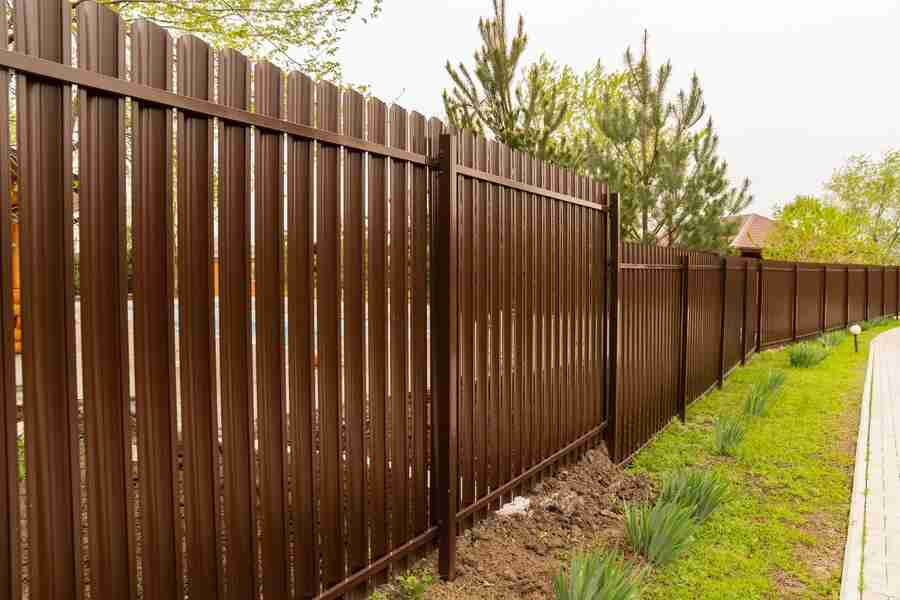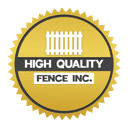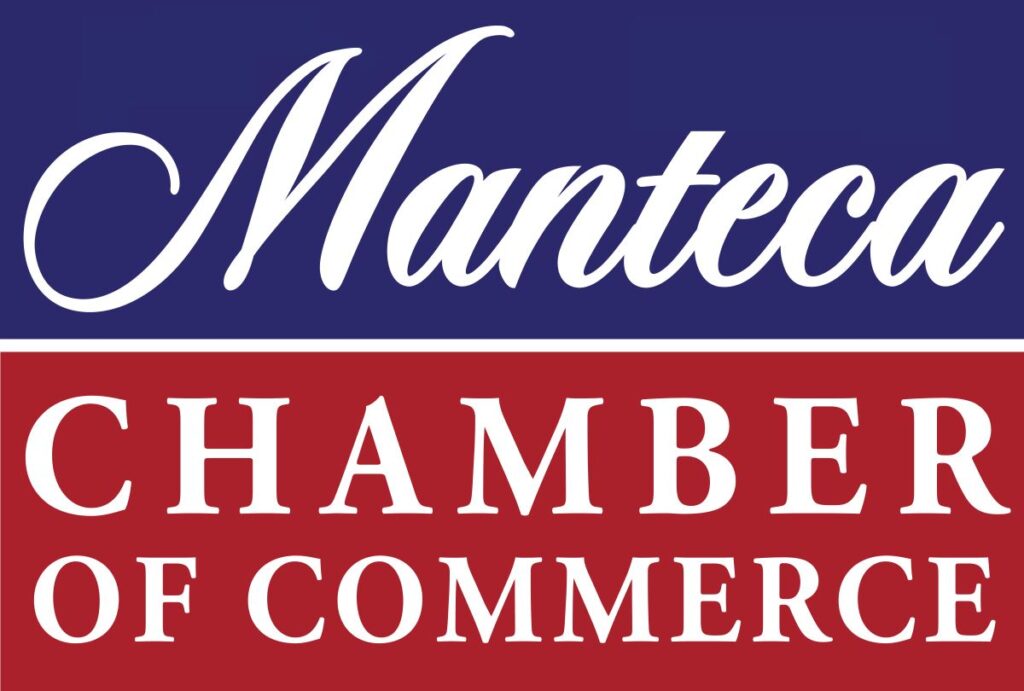Fence Comparison: Pros and Cons of Popular Types

Considering installing a new fence? Understanding the nuances of different types can make all the difference. From classic wooden picket fences to modern vinyl and robust chain-link options, the choices can be overwhelming. Each type comes with its own set of advantages and drawbacks, affecting everything from maintenance needs to curb appeal and cost-effectiveness.
In this guide, we delve into the pros and cons of popular fence types, offering insights to help you make an informed decision. Whether you prioritize aesthetics, durability, or ease of upkeep, our fence comparison will equip you with the knowledge needed to select the perfect perimeter for your property.
Traditional Charm: Exploring Wooden Picket Fences
Wooden picket fences evoke a sense of timeless charm and Americana. These fences are often associated with traditional suburban homes and are loved for their aesthetic appeal and versatility. Wooden picket fences come in various heights and styles, from pointed pickets to flat tops, allowing homeowners to choose a design that complements their property’s architecture.
One of the main advantages of wooden picket fences is their natural beauty and ability to blend seamlessly into both rural and urban landscapes. However, they require regular maintenance, including staining or painting every few years to protect against rot and weather damage.
Modern Appeal: The Benefits of Vinyl Fencing
Vinyl fencing offers a modern solution for homeowners seeking durability, low maintenance, and aesthetic versatility. Its popularity continues to grow due to several key advantages over traditional materials.
- Durability: Vinyl fences are resistant to rot, moisture, and pests, ensuring longevity even in harsh weather conditions. Their sturdy construction withstands strong winds and impact without warping or cracking.
- Low Maintenance: Unlike wood fences, vinyl requires minimal upkeep. A simple wash with soap and water keeps it looking new, eliminating the need for staining or painting.
- Variety of Styles: Available in various colors, textures, and designs, vinyl fences complement any architectural style. From classic white picket fences to contemporary privacy panels, options abound.
- Cost-Effectiveness: While initial costs may be higher than some materials, vinyl’s longevity and minimal maintenance translate to long-term savings. It eliminates the expenses associated with painting, staining, and replacing damaged boards.
- Environmentally Friendly: Vinyl fences are recyclable, reducing environmental impact. Their durability also minimizes the need for frequent replacements, further conserving resources.
Durability Matters: Insights into Chain-Link Fences
Chain-link fences are known for their durability and affordability, making them a popular choice for both residential and commercial properties. These fences are constructed from galvanized steel wires woven together to form a diamond-shaped pattern. They are highly resistant to rust and corrosion, making them suitable for all weather conditions.
Chain-link fences are also low maintenance and require little upkeep beyond occasional cleaning. However, they may not provide as much privacy as solid fences and are often considered less aesthetically pleasing compared to other fence types. Optional vinyl or polymer coatings can enhance the appearance of chain-link fences while providing additional protection against rust and increasing privacy.
Rustic Elegance: Cedar vs. Redwood Fences
Cedar and redwood fences are prized for their natural beauty and durability. Both woods are naturally resistant to rot, insects, and decay, making them excellent choices for outdoor structures. Cedar is known for its rich reddish-brown color and pleasant aroma, while redwood boasts a deeper red hue and fine grain patterns. These woods age gracefully, developing a charming silver-gray patina over time if left untreated.
Cedar tends to be more readily available and slightly less expensive than redwood, making it a popular choice for homeowners seeking a balance between quality and cost. However, redwood’s natural oils provide additional protection against moisture and insects, potentially extending its lifespan with minimal maintenance.
Eco-Friendly Options: Bamboo and Recycled Materials
Bamboo and fences made from recycled materials are gaining popularity among environmentally conscious homeowners. Bamboo, a rapidly renewable resource, is strong, lightweight, and naturally resistant to moisture and pests. It grows quickly, making it a sustainable alternative to traditional wood fencing. Bamboo fences can vary in style, from tightly woven panels to more open lattice designs, offering versatility in both privacy and aesthetic appeal.
Recycled materials such as composite fencing are made from a blend of plastic and wood fibers, diverting waste from landfills and reducing the need for virgin materials. These fences are durable, resistant to rot and insects, and often come with warranties against fading and staining. While eco-friendly options may have higher upfront costs, they can contribute to reducing your carbon footprint and may offer long-term savings through reduced maintenance and replacement costs.
Low Maintenance Solutions: Vinyl vs. Aluminum Fences
Vinyl and aluminum fences are popular choices for homeowners seeking low maintenance solutions. Vinyl fences are made from PVC (polyvinyl chloride) and require minimal upkeep beyond occasional cleaning with soap and water. They do not need painting or staining and are resistant to fading, warping, and discoloration from UV rays. Vinyl fences come in a variety of styles, including privacy panels and decorative picket designs, offering versatility to match different architectural styles. Aluminum fences are also low maintenance and durable, featuring powder-coated finishes that resist rust and corrosion.
They are lightweight yet strong, making them ideal for both residential and commercial applications. However, aluminum fences may not offer as much privacy as vinyl or other solid materials, depending on the style chosen. Both vinyl and aluminum fences are suitable for climates with varying weather conditions and can withstand exposure to moisture without deteriorating.
Security Focus: Steel and Wrought Iron Fences Compared
Steel and wrought iron fences are renowned for their strength and security capabilities, making them popular choices for properties where safety is a priority. Steel fences are typically made from galvanized steel or coated with a rust-resistant finish to enhance durability and longevity. They are available in various styles, including ornamental designs that add a touch of elegance to any landscape. Wrought iron fences, known for their intricate craftsmanship and timeless appeal, are made from iron alloys with low carbon content, making them more resistant to corrosion than pure iron.
These fences are often custom-made to fit specific architectural styles and can be paired with decorative elements such as finials and scrolls for added aesthetic appeal. While both steel and wrought iron fences provide excellent security, wrought iron tends to be more expensive due to its craftsmanship and customization options.
Cost Considerations: Budget-Friendly vs. High-End Options
When choosing a fence, cost is a significant factor for many homeowners. Budget-friendly options such as chain-link and basic wooden fences offer practical solutions at lower upfront costs. Chain-link fences are economical and easy to install, making them ideal for large properties or temporary enclosures. Basic wooden fences, such as pine or spruce, provide privacy and security without breaking the bank, though they may require more maintenance over time.
On the other end of the spectrum, high-end options like ornamental metal and exotic hardwood fences offer luxury and durability at a premium price. Ornamental metal fences, such as aluminum or wrought iron, enhance curb appeal and provide long-lasting security with minimal maintenance. Exotic hardwood fences, like teak or ipe, are prized for their natural beauty, durability, and resistance to rot and insects, making them suitable for upscale properties and coastal climates.
Privacy and Noise Reduction: Solid Panels vs. Lattice Fences
When privacy and noise reduction are priorities, solid panel and lattice fences offer distinct advantages. Solid panel fences, made from materials such as wood, vinyl, or composite, provide a barrier that blocks visibility and sound, creating a secluded outdoor space. These fences are available in various heights and styles to suit different privacy needs, from tall panels for maximum seclusion to shorter designs that still offer some visibility. Lattice fences, characterized by their crisscross patterns, offer partial privacy while allowing air circulation and natural light to pass through.
They are often used as decorative accents or to define boundaries without completely blocking views. Lattice fences can be made from wood, vinyl, or composite materials and come in a range of designs, including square, diagonal, and arched patterns. Depending on your preferences and needs, both solid panel and lattice fences can enhance privacy and reduce noise levels in your outdoor living spaces.
Regional Considerations: Best Fences for Different Climates
Selecting the right fence for your region’s climate is crucial for durability and performance. Factors like temperature variations and moisture levels can significantly impact your fence’s lifespan and maintenance requirements.
- Coastal Climates: Coastal areas demand fences resistant to saltwater exposure and high humidity, such as stainless steel or vinyl-coated chain-link.
- Dry, Arid Regions: Opt for materials like cedar or redwood, prized for their natural resistance to decay and ability to withstand temperature fluctuations.
- Humid Environments: Vinyl and aluminum fences excel in humid climates due to their resistance to moisture-related issues like rot and mold.
- Cold, Snowy Regions: Consider durable materials like vinyl or wrought iron that can withstand freezing temperatures and heavy snowfall.
Understanding your local climate ensures your fence not only enhances your property’s beauty but also stands strong against the elements for years to come. Choose wisely to maximize longevity and minimize maintenance.
Choosing the right fence involves balancing factors like durability, maintenance, cost, and aesthetic appeal. Each type offers unique benefits suited to different preferences and property needs. Whether you prioritize traditional charm, modern durability, eco-friendliness, or security, understanding these distinctions ensures a fence that enhances both function and style for your home.
Ready to enhance your property with a fence that meets your needs? Contact High Quality Fence at 209-815-9015 and info@highqualityfence.com or visit us at 1112 N. Main Street #171, Manteca, CA 95336. Our experts can help you explore options tailored to your preferences and provide professional installation services to transform your outdoor space. Don’t wait—secure your property and elevate your curb appeal today!


